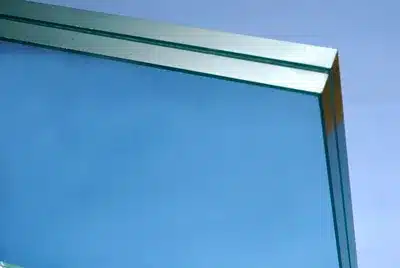
Glass plays a significant role in our everyday lives, not only as a transparent material but also as a source of protection and insulation. Various types of glass have been developed to cater to different needs and requirements. In this article, we will explore the features and benefits of laminated glass, STC rated glass, security rated glass, hurricane rated glass, switchable privacy glass, impact rated safety glass, and insulated glass.
Laminated glass is a type of safety glass that consists of two or more layers of glass bonded together with an interlayer, typically made of polyvinyl butyral (PVB). The interlayer provides strength and prevents the glass from shattering upon impact. Laminated glass offers increased security, as it remains intact even when broken, reducing the risk of injury from shattered glass. It is commonly used in applications such as windshields, storefronts, and glass balustrades.
STC (Sound Transmission Class) rated glass is designed to minimize the transmission of sound through windows and doors. It is especially beneficial in environments where noise reduction is crucial, such as residential areas near busy roads or commercial buildings located in noisy urban centers. STC rated glass utilizes special acoustic glazing techniques and materials to dampen sound vibrations and create a more peaceful and comfortable indoor environment.
Security rated glass, also known as bullet-resistant or bulletproof glass, provides protection against forced entry and ballistic threats. It is constructed by combining multiple layers of glass with tough interlayers, such as polycarbonate or polyurethane. Security rated glass is commonly used in high-security establishments like banks, government buildings, and jewelry stores. It offers enhanced safety and peace of mind by deterring potential intruders and minimizing the risk of break-ins or acts of violence.
Hurricane rated glass, also referred to as impact-resistant or stormproof glass, is specifically engineered to withstand the high winds and flying debris associated with hurricanes and severe storms. It consists of multiple layers of glass bonded with an interlayer that remains intact even if the glass breaks. Hurricane rated glass provides protection against wind penetration and helps maintain the structural integrity of buildings during extreme weather events, reducing the risk of property damage and ensuring the safety of occupants.
Switchable privacy glass, also known as smart glass or privacy glass, offers the ability to switch between transparent and opaque states with the flick of a switch or the push of a button. This innovative glass technology utilizes special electrochromic or liquid crystal materials to control the light transmission and visibility. Switchable privacy glass provides privacy on demand, making it ideal for applications such as conference rooms, healthcare facilities, and residential spaces where privacy and versatility are essential.
Impact rated safety glass is designed to provide protection against accidental impacts and breakage. It is commonly used in areas where there is a high risk of glass breakage, such as sports facilities, schools, and public spaces. Impact rated safety glass can be laminated or tempered, depending on the specific requirements. It reduces the likelihood of injuries caused by broken glass by staying intact even when shattered, minimizing the risk of sharp glass fragments.
Insulated glass, also known as double-glazed or triple-glazed glass, consists of multiple glass panes separated by an air or gas-filled space. This design provides excellent thermal insulation, reducing heat transfer and improving energy efficiency. Insulated glass helps maintain comfortable indoor temperatures and reduces heating and cooling costs. It also offers enhanced sound insulation properties, creating a quieter and more peaceful living or working environment.
In conclusion, the diverse range of glass types discussed in this article serves various purposes, from providing safety and security to offering energy efficiency and privacy. Laminated glass enhances security and prevents shattering, STC rated glass reduces noise transmission, security rated glass protects against forced entry, hurricane rated glass withstands severe weather conditions, switchable privacy glass offers on-demand privacy, impact rated safety glass minimizes the risk of injuries, and insulated glass provides thermal insulation. Understanding the characteristics and applications of these glass types can help individuals and businesses make informed decisions regarding their specific needs and requirements.
Impact resistant safety glass does not make glass break-proof, but it will keep the glass in one piece to prevent or limit injury if breakage occurs. Safety glass is required when glass occurs in a door, within 24 inches of a door, or within 18 inches of the floor. Fortunately, a safety rating can be achieved by laminating two layers of annealed plate glass together. Our safety glass meets ANSI Z97.1 and CPSC 16 CFR 1201 Category II unlimited which means we can achieve a safety rating at any size. Laminated glass enhances security by remaining intact even when broken, reducing the risk of injuries from shattered glass. It provides a barrier that is difficult to penetrate, deterring potential intruders.
The necessity of hurricane rated glass depends on the region’s susceptibility to hurricanes and severe storms. Areas prone to such weather conditions can greatly benefit from the added protection and safety offered by hurricane rated glass.
Yes, switchable privacy glass can be installed in homes. It offers privacy on demand and can be used in various residential applications such as bathroom windows, partitions, and exterior doors.
Insulated glass improves energy efficiency by reducing heat transfer. The air or gas-filled space between the glass panes acts as insulation, preventing heat from escaping during winter and blocking heat from entering during summer, thus reducing the reliance on heating and cooling systems.
Yes, there are alternatives to impact rated safety glass. Tempered glass is another commonly used safety glass that undergoes a controlled heating and rapid cooling process, making it stronger and more resistant to breakage than regular glass.
There’s much to see here. So, take your time, look around, and learn all there is to know about us. We hope you enjoy our site and take a moment to drop us a line.